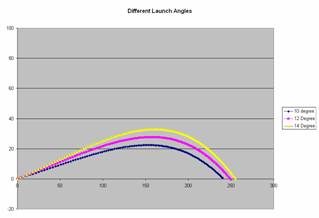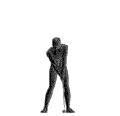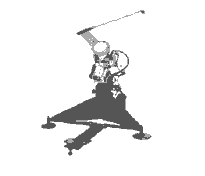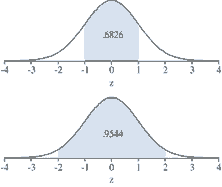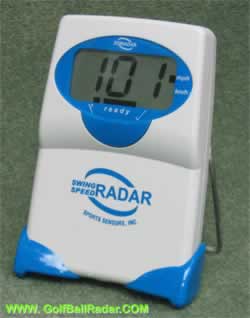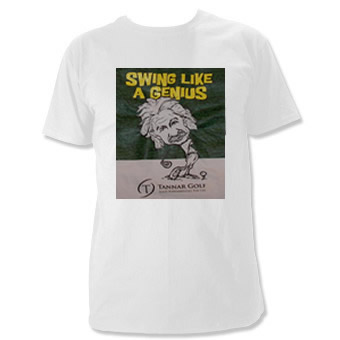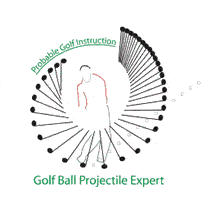
|
|
Longest Golf Ball TestingDo you want to hit the ball farther? You can hit the ball farther by:
Which golf ball do you play? Do you have a favourite? How does it compare the claimed "longest balls" in the game? How much does it cost? What do you feel are the most important characteristics of a golf ball? Length? Spin? Feel? Cost?
Get the tests on 50 topline golf balls now for $14.99
In a recent poll on my site 53% of golfers rank distance as most important followed by 26% for soft feel, 12% spin and 8% cost.
Many golf balls are expensive. A sleeve of Pro V1 s will cost around $15 US. That's $5 a ball. Other types of balls cost much less such as less than $20 per dozen. Are balls like the Pro V1 and Nike One actually worth the large cost? It depends what you want in a ball. If what you want is more length, these balls will not provide what you think.
Visiball Golf Ball Finders 4 Different Lenses for: 1. Bright Light View Demo of how they help you find your lost golf balls. There have been a number of studies over the past few years that have tested and compared the length of the game's best balls. Some have used the mechanical hitting machine, The Iron Byron, and some have used real golfers just like you. In this report, I provide the golfer with mathematical, scientific conclusions as to the significance of any differences in the golf ball testing results.
You can order a copy of the report below. You can have it in your computer within the next 5 minutes. The report costs less than a sleeve of premium golf balls. In it, you'll find and learn the following:
Get the 2007 tests on 50 topline golf balls now for $14.99
The basis of the report is a statistical analysis. Samples of balls are taken to perform the tests. Each ball of the same brand and type will go different distances each time. A "distribution" of distances is collected. Usually, the mean (average) distance is calculated as well as the amount of variance in the distances. If a ball were hit many times, the spread of the different distances would be "normally distributed," like the graphs above. Most balls would travel a distance close to the mean but there would be some which would differ significantly.
Each brand and type would have its own mean and distribution. So even if the mean distances differed by say 5 yards, depending the the distribution spread, 5 yards may or may not be significantly different. There could be a difference due to pure chance. Maybe the samples of the balls tested did not actually represent truly the balls they represented. Maybe they were lemons or maybe they were the cream of the crop. The study I have done uses actual, scientifically measured distances and proper mathematical statistical analysis to determine what balls are the longest and what are the shortest. You'll find no other study like this. The ball manufacturers won't be pleased with the results. They'd rather you not know how the different balls compared in real golf ball testing. They'd rather dress up their balls with nice packaging and new names each year than subject them to rigorous statistical comparisons with their competitors. Order your copy today. View a snipit of the report below. Read testimonials from my past customers. Get the 2007 tests on 50 topline golf balls now for $14.99
Once processed, you will be prompted with a link to download. Since the time is very limited, you should download immediately. You will receive an email from PayPal within minutes with download instructions. Here is a snipit of the report: What is the Longest Golf Ball? Often golf ball manufacturers advertise that they make the longest ball. Some might even provide testing results that compare their ball's distance to their competitors'. They cite statistics that "prove" their ball is the longest. A famous saying about statistics is "there are lies, damn lies and then there are statistics." There is a lot of credence to that statement given the way some manufacturers pick and chose their statistics. Then again, other ball manufacturers don't make such comparisons. Why doesn't Titleist advertise how much longer the Pro V1 and Pro V1x is than other balls? There is a reason for which I'll reveal in this study (Pro V1 was not hit in the study but the conclusions can be applied to all golf balls). Golf ball data is very difficult to obtain. Manufacturer’s do their own testing but are very reluctant to release any of the data (for good reason). There has been some independent testing done. The first big study was done in 1998. The results published in a book called “Strictly Golf Balls.” The data was collected using a machine ball striker (Iron Byron) for consistency. My first analysis was of that data. What I found was that the hard, two piece balls of the time were significantly longer than the balata balls. Players that played balata balls for feel, spin and control, did so while sacrificing significant distance. These balata balls are no longer made today. I also analyzed data from 2003, 2005 and now data from 2007. The 2003 and 2005 data were collected by having golfers hit golf balls ensuring to count only those that are solidly hit and within a small range of club head speeds (this was to closely simulate conditions that are the same for each ball). The 2007 data were collected by having a mechanical hitting machine (Iron Byron) hit balls under the same conditions. The 2007 data was published in the Feb 2008 issue of GOLF Magazine. My report provides a statistical analysis of that study. .
Before continuing, it is important to have a good understanding of how data for golf ball testing is collected and therefore the limitations as to the interpretation of the data. To test one golf ball with another, one must measure both under the same conditions. Use the same club with the same clubhead speed off the same part of the clubface. The measurements involved are all subject to experimental error. There is no such thing as a 100% accurate measurement. All measuring devices have uncertainty. They do not measure the same. Another limiting factor is that one cannot measure all of the golf balls; this is usually too time consuming and expensive. Mathematicians have created tests that incorporate using samples. The larger the sample, as long as it is randomly chosen, the more representative it is of the population it is measuring. Mathematicians have been able to also design tests for small samples that are statistically representative. For example, let's say a one ball manufacturer claims to have a ball that flies farther than its competitor. The company does some tests and finds the average distance for its ball is 252 yds and that for its competitor is 248 yds. The question, "Is 248 yds significantly shorter than 252 yds?", must be answered statistically. The amount of significance depends on the size of the sample sizes (how many of each ball was tested), how randomly the samples were chosen and on the accuracy of the measuring devices. If the measurements indicated the balls had a 40 yard shorter distance than 4 yards, then it would be which ball was longer. But a 4 yard difference could be due to random chance. It would be similar to flipping a coin 10 times and having 8 heads come up and only 2 tails. Flipping the coin many more times might yield much closer results (100 times: 53 heads and 47 tails). The tests that mathematicians have developed measure the likelihood of a difference being due to chance as opposed to a difference due to another factor (one golf ball does in fact go farther than another because of better construction). Order your copy today. Once processed, you will be prompted with a link to download. Since the time is very limited, you should download immediately. You will receive an email from PayPal within minutes with download instructions.
©Probable Golf Instruction, Ken Tannar 2001-2015. All Rights Reserved. Langley, B.C. V2Y 2G4 CanadaPhone: 604-309-7030 FAX: to fax, email an attachment probablegolf@yahoo.ca or golfexpert@probablegolfinstruction.com |
| GOLF ASSISTANTS |
|
Golf Trip Pairing CalculatorPlanning a golf trip with some friends/family? Trying to sort out the foursomes so people don't play too often with others? Order your ready made Spreadsheet. Type in the names, print out the groupings. Minimize repeat pairings.
Wind Caddy will advise you on aim, distance and club so that you can play the wind successfully. It takes the guess work out of club selection. New option to enter custom distances for each club. The algorithm will make a club suggestion accordingly. Use the right club in every condition!
|
|
|
| GOLF NEWS |
Golf Putting Green Reading Glasses |
| GOLF NEWSLETTER |
Statistics
·Putting
·Longest Golf Balls
·Games
·Handicap
·Scoring
·Shot Patterns
·Tournaments
·PGA Tour Stats
Pro Shop
·Ball Marker Engraved
·Books
·CDs & DVDs
·Green Reader
·Impact Labels
·Laser Rangefinder
·Longer Drives
·Products
·Teaching Aids
|
|
| GOLF POLL |
The 19th Hole
·Advertising
·Ask the Golf Expert
·Consultation/Litigation
·FAQs
·Golf Blog
·Golf Draws
·Links
·Science of Golf
·Tell a Friend
·Testimonials
·

Golf Ball Finder Glasses
Find all your errant golf balls and many more!
| GOLF TIPS |
How to play:
|


